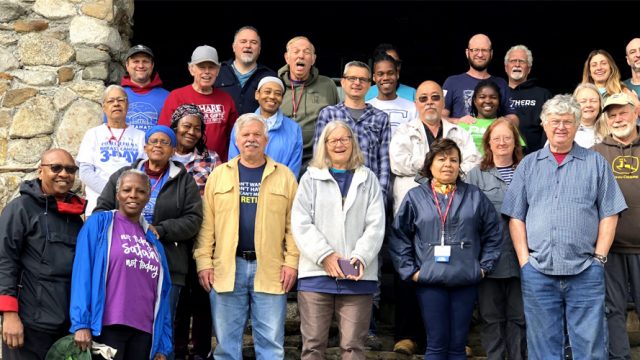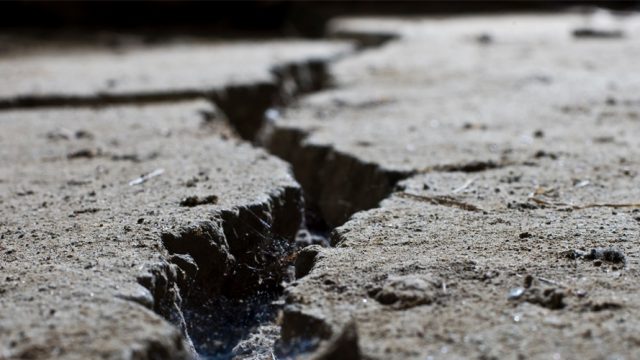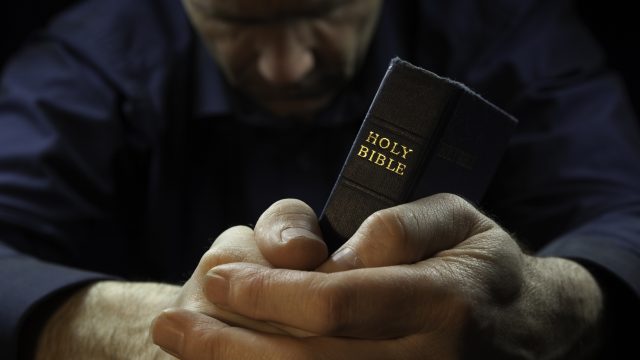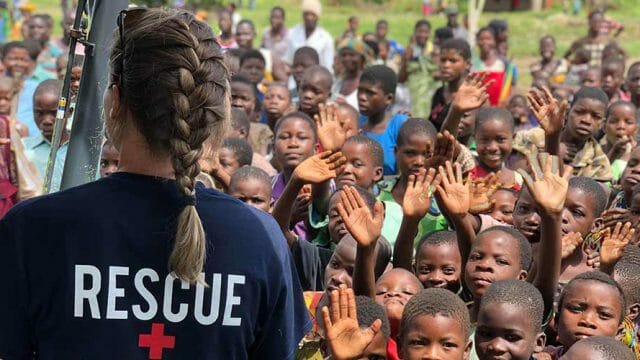What can we learn?
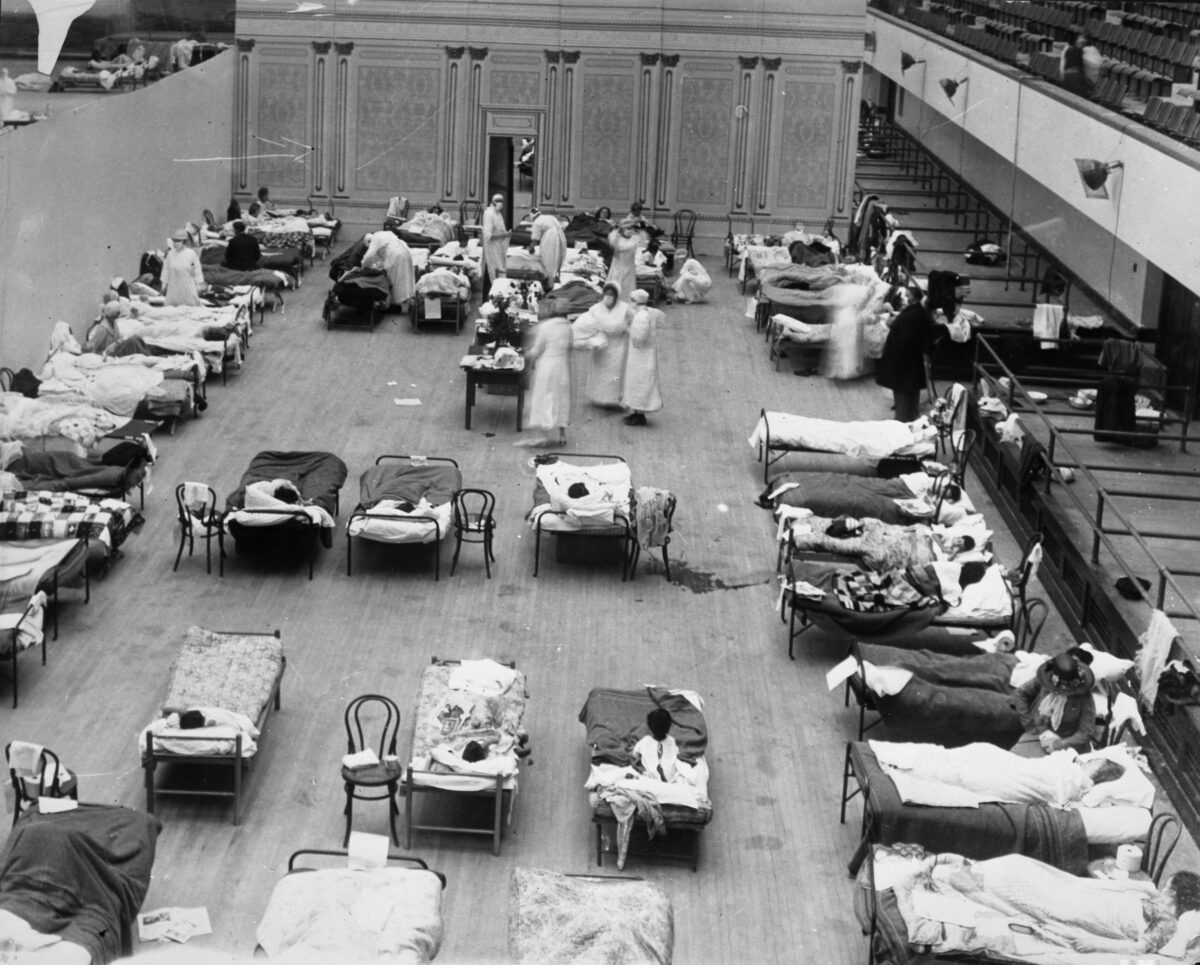
The deadliest pandemic in modern history was the 1918-1919 influenza. Most conservative estimates indicate that more than 50 million people died. It was misnamed the Spanish influenza, or Spanish flu, when it should have been called the American influenza (it most certainly did not come from Spain). Historian John Barry, a leading expert, has traced the start of the epidemic to rural Kansas. The ease of modern transportation, especially American railroads, gave the virus a free ride as it stealthily infiltrated towns and cities around the globe.1
What made this particular pandemic so unnerving was the fact that it targeted the young and healthy. People could die within 24 hours of the onset of the first symptoms. Hospitals quickly became overwhelmed. People literally starved to death as friends and neighbors were afraid to bring them food. In some cities, bodies were stacked up in houses, on porches, and in the streets, and mass graves were dug as the death toll climbed.
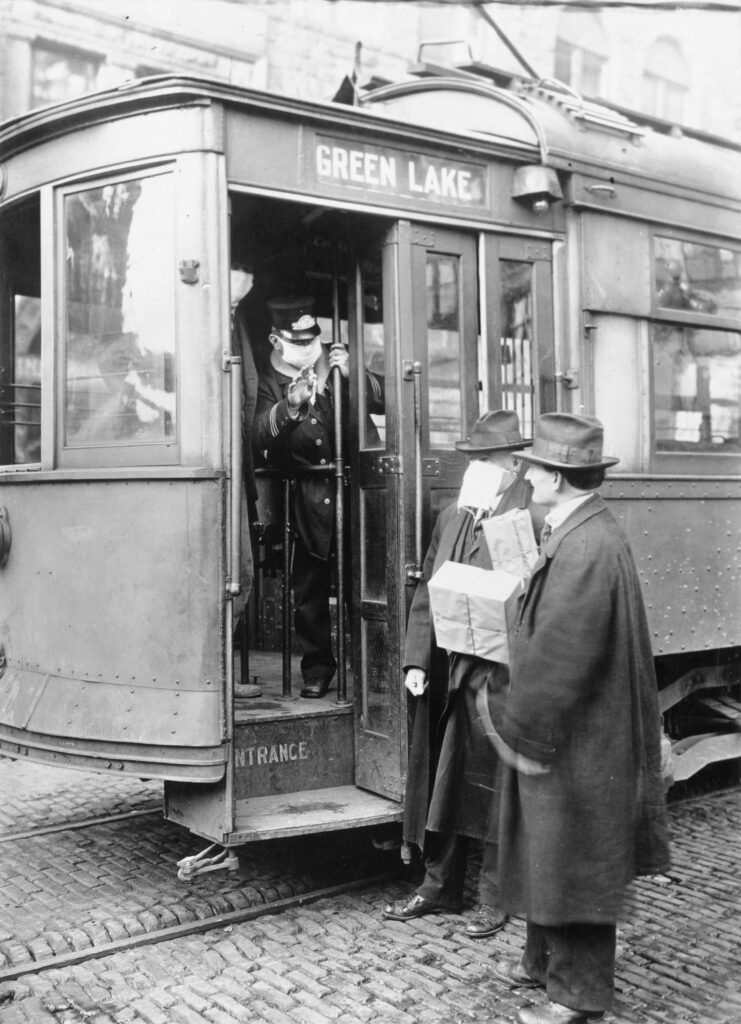
Soldiers mobilizing in 1918 for World War I spread the flu across the country and the world as they left for Europe. They traveled on overcrowded troop transport ships—the perfect breeding ground for the virus—so that by the time they landed, the pandemic had already quickly spread among them. The contagion indiscriminately attacked both sides as the war slowly ground to a halt.
Patriotism triumphed over public health concerns. Public officials generally avoided talking about it or pretended it didn’t exist. At one point, those who discussed the flu publicly were prosecuted. The lack of information meant that rumors and disinformation spread quickly. One popular rumor, for example, suggested that the malady was a biological weapon launched from a German U-boat. Even more tragic were the public rallies to raise money for war bonds. One such loan rally held in Philadelphia, despite cautions from doctors, culminated in more than 200,000 people flooding the streets. Soon after, a public health disaster ensued as the flu spread to thousands across the city, killing hundreds every day. Historians estimate that following this event more than 15,000 died.
Adventist Responses
So how did Adventists react to this public health crisis?
The 1918-1919 influenza pandemic went through three major waves as the disease morphed. The second of the three phases turned out to be the deadliest and climaxed just as the war was nearing its end in October 1918. By this point, Adventists knew they were in the midst of a crisis. The minutes of church committees point to this fact. The Adventist school for Native American children lost its teacher to the “Spanish influenza.” Church leaders made contingency plans for major church events, including a scheduled Bible conference that, after an earlier postponement because of the war, was delayed again to the summer of 1919. Similarly, church leaders made additional contingency plans for Fall Council 1919 to be held at the Boulder-Colorado Sanitarium. Officials were worried that there wouldn’t be enough space because of the large number of patients, so they made backup plans to hold it in nearby Denver, where there was suitable transportation and hotel rooms. They didn’t want to hinder efforts to help the sick.2
By October 11, 1919, as the third wave of the epidemic was underway, General Conference leaders passed a resolution titled “Organizing Churches for Emergency Work.” They recommended that “in time of epidemic, or other serious health emergencies, everything possible be done by conferences to rally our churches and prepare them for meeting the needs of our own people, and to render help to others, by calling upon our available doctors and nurses to instruct and direct in such work . . . giving the emergency needs as prompt and full attention as the situation may demand.”3
Call to Action
One of the most poignant calls for action came from W. A. Ruble, M.D., secretary of the General Conference Medical Missionary Work. He acknowledged that the world was “passing through one of the most widespread and devastating pandemics . . . ever experienced.” Adventists were not immune to this disease, and despite calling every medical professional to help, the health-care system was overwhelmed. Ruble warned against some Adventists who took a “holier-than-thou” approach, citing their immunity from the disease “as an evidence of [their] own righteousness, while attributing the misfortune of [their] brother to his lack of fidelity.” Such people were none other than health reform “cranks.” Ruble further warned against those who quickly jumped to conclusions, such as the pandemic being a “harbinger of the great distress that will come in the last days.”
Instead, Ruble called upon Adventists to see this as an opportunity “for carrying the gospel to the world.” As churches and schools were closed, travel was restricted, and colporteurs were refused the privilege to sell books, he challenged the church: “After influenza, what? What shall Seventh-day Adventists do to be ready for such experiences?” He urged that as hospitals were overwhelmed, each Adventist home could become a center for medical missionary work, teaching and ministering to others.
“During this epidemic,” he noted, “every Seventh-day Adventist has had ten times as many opportunities for service as he could fill if he had been ready for them. What a chance for missionary endeavor and for practicing that pure religion and undefiled of which James speaks! Some, however, have been so fearful of contracting the disease that they have refrained from offering assistance to the distressed. . . . In such experiences as we are passing through, barriers, social and professional, are being broken down.” So now what? “Let every Seventh-day Adventist become a medical missionary.”4
Application
One example of how Adventists responded occurred at the Hutchinson Theological Seminary in Minnesota. Half of the 180-student body came down with the malady. The seminary practiced self-isolation, quarantining students as they became sick, and focused on boosting immune systems with a healthy diet and fomentations placed on the chest and abdomen. After students and staff improved, each patient was then quarantined for an additional five days to avoid the spread of the disease. The school also took steps to take care of people in the community.
Today, experts know that part of what made the epidemic of that era so deadly was the overwhelming response by the immune system. Even without this knowledge, medical missionaries did the best they could to not let the disease stop them from helping those around them.
While social distancing has been practiced from antiquity, part of what made the “Spanish flu” so deadly was the fear it inspired as people stopped helping others who desperately needed food and medical care.
Social distancing, along with efforts to practice good hygiene and health reform, contributed in a very constructive way to help alleviate suffering during the pandemic.5
While Adventists were certainly not immune, those who heeded their counsel generally fared better. Adventists developed a number of articles and a circular pamphlet titled simply, Epidemics: How to Meet Them. This latter pamphlet quickly became a best seller as people across the country, unable to get medical treatment, learned how to apply hydrotherapy and other forms of simple health treatments at home to help people recover.
Adventists, by then well-known as health reformers, recognized in the midst of a pandemic that they also had a golden opportunity to reach those around them.6
Michael W. Campbell, Ph.D., serves as professor of religion at Southwestern Adventist University in Keene, Texas.
1This introduction is based upon the work of John M. Barry, The Great Influenza: The Story of the Deadliest Pandemic in History (New York: Penguin Books, 2018). Barry is considered the leading expert on this particular epidemic.
2See the General Conference Committee Minutes, Sept. 15, 1919, p. 381.
3General Conference Committee Minutes, Oct. 11, 1919, p. 412.
4W. A. Ruble, “After Influenza, What?” Review and Herald, Oct. 31, 1918, p. 16.
5“Complimentary to the Danish-Norwegian Seminary,” Review and Herald, Jan. 9, 1919, p. 32.
6See advertisement, Review and Herald, Dec. 25, 1919, p. 31.



